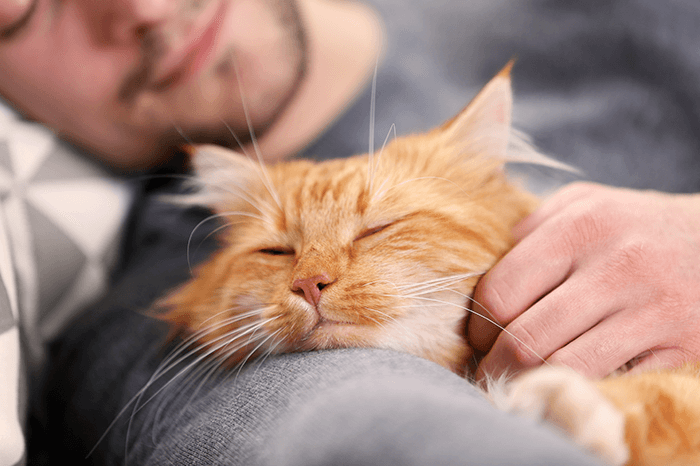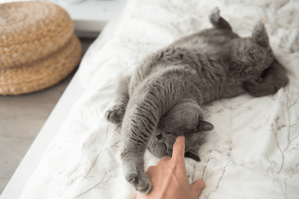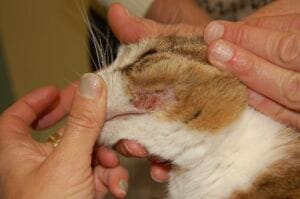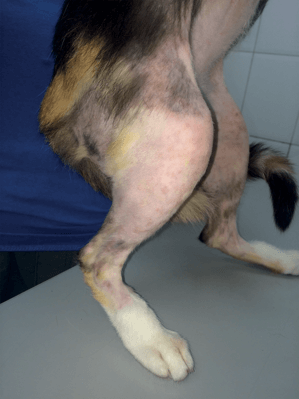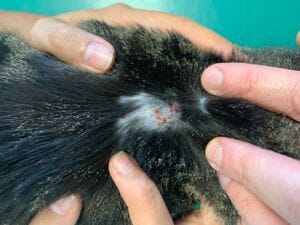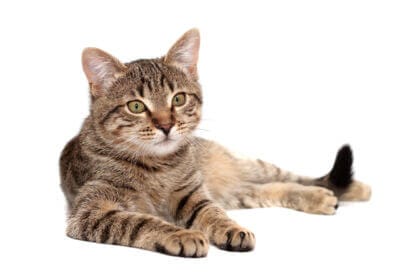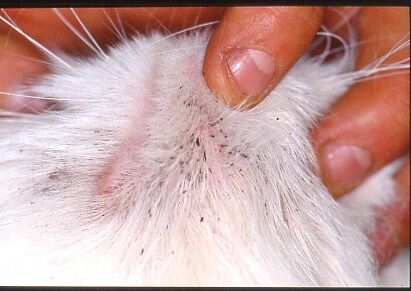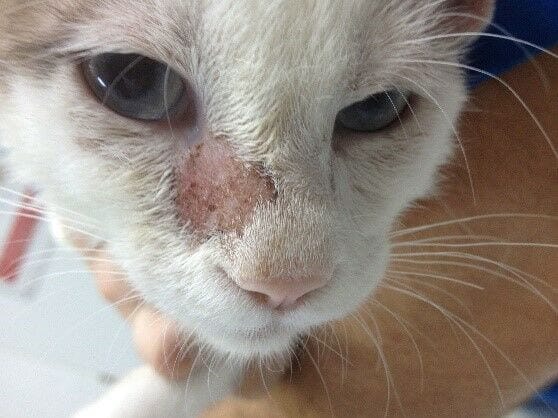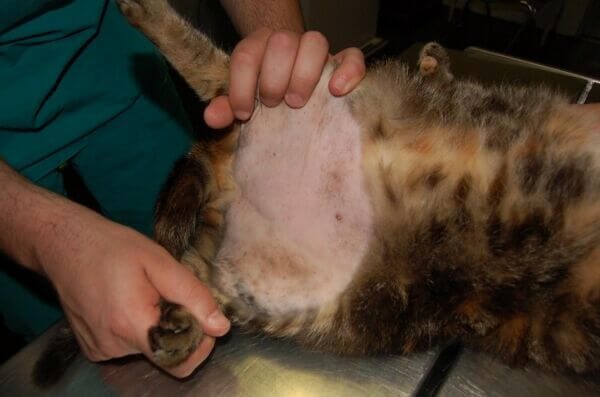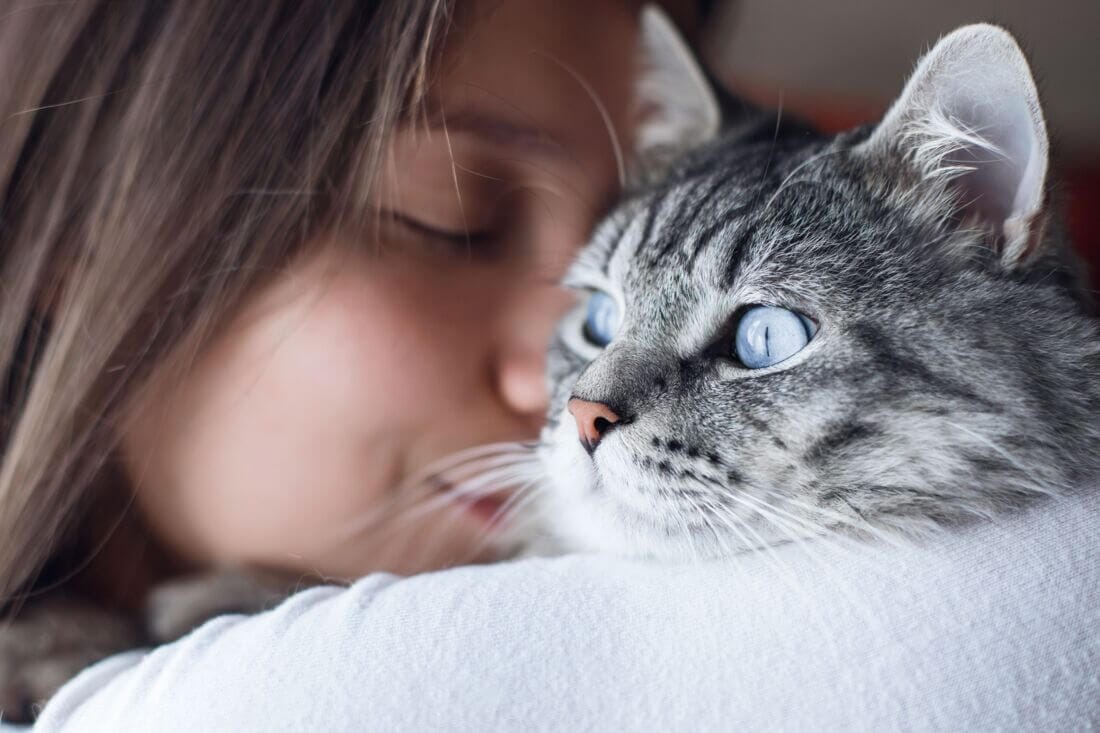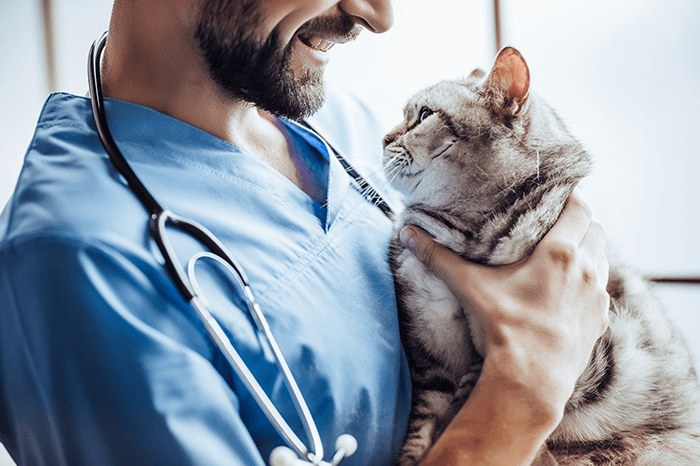Get to know the most common skin problems in cats
Marina G VeterinarianSkin problems are somewhat common in cats. Skin is also the most visible organ of the body, so that you can react really quick when discovering anything wrong.
As the cat’s largest organ, the skin can be affected by several conditions, ranging from uncomplicated problems to chronic diseases that need life-long management. Once the skin barrier and protective function are disrupted, the skin becomes more susceptible to further damage and aggression, which can result in secondary problems.
If you suspect that your cat might have a skin problem, it’s very important to book an appointment with your vet for a thorough check-up.
How to recognise a skin problem in your cat?
There are a number of signs suggestive of skin problems in cats, which can range from something as simple as over-grooming to large areas of hair loss with broken skin.
Common signs of cutaneous (skin) problems include:
- Itching (pruritus) and scratching
- Over-grooming which can be a sign of pruritus
- Hair loss (alopecia)
- Blackheads (comedones)
- Tiny bumps with crusts (miliary dermatitis)
- Irritated, red, or darkened skin
- Raw, angry-looking, crusty, ulcerated skin
- Dry, flaky or oily skin
- Nodules
Feline dermatology is a whole world in itself, but some problems affect cats more frequently than others.
External parasites
External parasites are a frequent cause of skin problems in cats. Something as tiny as a flea can have a disproportionately detrimental effect on your cat’s skin and overall health, even if your cat does not have access outdoors.
But fleas are not the only ectoparasites we need to be wary of, as ticks, mites, and even mosquitos can cause dermatological problems in cats.
Fleas
The most common sign that a cat has fleas is itchiness. With these tiny parasites walking all over your pet’s skin looking for the perfect spot for a meal, no wonder we frequently see cats trying to scratch, nibble or groom away these unwanted guests.
When itching is severe, secondary lesions such as bald spots, red skin and wounds are likely to develop, and this problem can be further complicated if your cat is allergic to the flea’s saliva, also known as flea allergy dermatitis.
Flea problems should not be taken lightly. An adult flea can lay up to 50 eggs per day, which fall from your pet’s skin onto their home environment and can easily result in a flea infestation. If you’re having difficulties getting rid of your cat’s fleas and if their parasite treatments don’t seem to be working, don’t hesitate to talk to your vet.
Mites
There are several species of mites that can lead to cutaneous problems. Most mites settle on the skin, causing intense itchiness, while others, namely the ones responsible for demodicosis, live in the hair follicle.
Most mites are microscopic, but their size is variable depending on the species, and some species that can be seen with the naked eye, including harvest mites, which are usually the size of a pinhead and orange, and Cheyletiella, also known as walking dandruff.
Mite infections most frequently affect the ears, and these are commonly seen in kittens. These tend to result in a characteristic ceruminous dark ear secretion that resembles coffee granules.
Mite ear infections usually cause discomfort, itchiness and even pain, and you’ll often see cats scratching their ears or shaking their head.
Other than the ears, mite infections tend to affect the cat’s face and head, but lesions, such as bald spots, crusting and scaling, can be found on other parts of the body as well. Generalised skin disease, however, is uncommon, and it is most likely to occur if there’s a concurrent health issue such as diabetes or Feline Immunodeficiency Virus infection.
Most mites are contagious to other pets, and some mites are even infectious to humans.
Allergies
Yes, cats can also suffer from allergies, just like ourselves!
The main sign of allergies in cats is itchiness. As cats try to alleviate this itchiness by scratching and grooming, they usually cause further damage to their skin and are likely to develop bald areas and even excoriations.
Other signs of allergies in cats, that are not specific to one type of allergy, include:
- Itching around the head and neck (head and neck pruritus)
- Self-induced alopecia (hair loss caused by, for example, overgrooming)
- Miliary dermatitis (small, scab-like sores on the skin),
- Lesions of the eosinophilic granuloma complex (a pattern of reaction of the skin to an underlying problem, most often allergic, that can manifest as indolent ulcers that are usually present on the lips; other ulcerated skin lesions; or raised, firm, pink plaques or nodules),
- Secondary bacterial and yeast infections (Malassezia dermatitis) due to excessive scratching.
Flea allergy dermatitis
Flea allergy dermatitis is the most common allergy seen in cats, followed by atopic dermatitis. It is caused by an exacerbated reaction of the cat’s own immune system to allergens present in the flea’s saliva.
This means that a single flea bite can cause a disproportionate cutaneous reaction, which is why we cannot readily rule out FAD if we don’t find fleas on your cat!
Cats with flea allergy dermatitis typically show lesions on their head, back, near the tail, abdomen with commonly miliary dermatitis, but other distributions, including the thighs and flanks for example, are also possible.
Other insect bite hypersensitivities
Cats may also be sensitive to bites from other insects, such as mosquitos, and stings from ants, bees or wasps.
Stinger insects usually inject venom as they sting, which can result in an immediate, acute allergic reaction with swelling, irritation and intense itchiness that can lead to more severe problems, such as difficulties breathing. This type of anaphylactic reaction very rarely occurs, but if it does, don’t hesitate to contact your vet.
Food allergy
As the name suggests, in feline food allergy, the offending allergen is present in cats’ food. Cats can be allergic to many different foods, including beef, chicken, fish and dairy.
Contrary to popular belief, food allergy most often manifests with a food that your pet is already familiar with, instead of a novel protein.
Itchiness is usually more intense in the head, neck, and ears, and vomiting and diarrhoea also occur in some food-allergic cats even if this manifestation is more rare.
Atopic dermatitis
Again, atopic dermatitis is caused by an exaggerated immune response to an allergen present in the cat’s environment. Depending on which allergen the cat is reactive to, they may only show skin signs seasonally.
Common allergens associated with atopic dermatitis include:
- House dust mites and other insect allergens.
- Pollen and other plant allergens.
- Mould allergens.
The challenge of feline allergic disease
Diagnosing feline allergic diseases is challenging and can be very time-consuming for multiple reasons:
- Clinical signs are similar in flea allergy dermatitis, atopic dermatitis and food allergy, and these can be clinically indistinguishable. Also, signs of allergic disease are common to other skin diseases.
- If your cat suffers from one type of allergy, they are more likely to suffer from the others as well.
- There’s no one single test that allows vets to diagnose a cat as allergic, meaning a combination of multiple tests and ruling out other conditions is needed.
However, reaching a correct diagnosis is of critical importance, as allergies in cats are chronic in nature and will need life-long management.
Seborrhoeic disorders: feline acne & dandruff
Did you know that cats can suffer from dandruff & acne, just as we can? Among manifestations of seborrhoeic disorders, dandruff and acne are the most common.
Acne in cats
Feline acne manifests as blackheads on a cat’s chin, making it have a dirty appearance. While there will be no other signs for some cats, for others, the chin can become swollen, itchy, and even infected with papules, pustules and even furuncles. Scabs and wounds can also develop as a consequence of scratching.
Even though external aggression, seborrhoea, weakened immunity and stress seem to contribute to feline acne, we still don’t know exactly what causes it.
Feline acne can be a chronic problem for some cats, as it is often recurring.
Dry skin & dandruff in cats
Dry seborrhoea in cats is most often recognised as flaky, scaling skin, dandruff, commonly along the back although it can be seen in localised areas. Signs of dry seborrhoea may not always be easy to recognise, though, due to cats’ meticulous grooming habits. Most often, dry skin and dandruff manifests as a reaction of the skin to underlying aggression.
Skin infections
With the skin being the first defence barrier against all kinds of external aggression, it’s not surprising to realise that skin problems frequently affect cats. But fortunately, when it comes to skin infections in cats, these don’t seem to be as common as in dogs. Skin infections in cats are mostly due to fungi (ringworm being the most common), bacteria and yeast being secondary to self-inflicted lesions due to itch.
Ringworm
Contrary to what the name suggests, ringworm is caused by a fungus (dermatophytes), not a worm.
It is important to be aware of this disease, as it is contagious to other animals and people. However, contact with infected animals or contaminated objects doesn’t always progress to skin disease, but animals and people debilitated (with concurrent illness, for example) or immunocompromised are more susceptible to develop it.
The way ringworm manifests in cats can be highly variable. You can find ring-shaped skin lesions, bald patches of dry, scaling skin, red skin with dandruff, papules and crusts.
Secondary infections
Although not as common as in dogs, skin infections in cats are, in most cases, secondary to self-inflicted lesions due to scratching or licking. Treatment of the infection is vital, but more importantly, the cause of the underlying skin or systemic problem must be determined.
It’s important to keep in mind that skin infections don’t necessarily mean bacterial infections (pyoderma), as cats can be affected by fungal infections as well.
Systemic disease with dermatological signs
Not all skin problems are the result of a skin condition, and many systemic diseases manifest with cutaneous/coat signs, including:
- Hormonal conditions, such as hyperthyroidism and diabetes
- Nutritional deficiencies
- Auto-immune diseases, such as lupus and pemphigus
- Immune-compromising diseases, such as FIV (Feline Immunodeficiency Virus) and FeLV (Feline Leukemia Virus) infection
- Tumours
Skin lesions will vary depending on the underlying disease, but any cat that shows a dull, unkempt coat should raise suspicion of a systemic condition.
Psychogenic alopecia and dermatitis
Psychogenic alopecia and dermatitis usually result from a cat’s response to stress in their environment, such as a new family member or boredom.
Hair loss and dermatitis are caused by incessantly grooming one or more parts of the body. This results in bald spots and, depending on how often and aggressively your cat is grooming, other secondary lesions, such as red or darkened skin, raw skin, eosinophilic lesions and infections.
As over-grooming can be a sign of a number of other skin or systemic conditions, a thorough physical examination, elements of history compatible with behaviour disorders, and diagnostics are essential, and a psychogenic problem should be diagnosed after ruling out all other possibilities.
